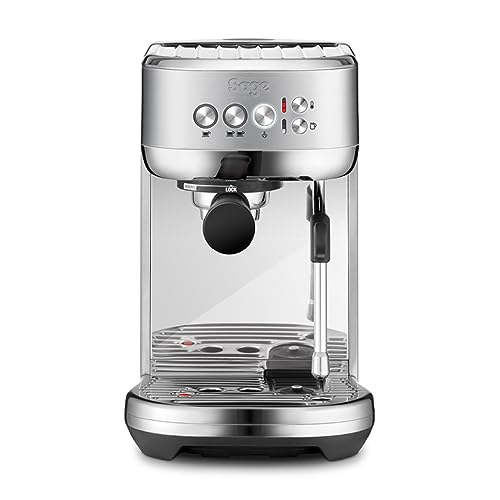Coffee and Espresso Machines
Espresso machines use pressure in order to press water into finely crushed and tamped beans. They create a rich, flavorful brew.
Good Housekeeping Institute experts recommend models that are brewed at a minimum of 9 bars to ensure the best extraction. Beware of manufacturers that claim to use higher pressure than what is required.
Types
The espresso maker (also known as a coffee or Espresso maker) creates coffee that is more concentrated, of better quality, and more expensive than the typical cafe drinks. It utilizes an average of nine bars of pressure. These machines have many features, such as temperature and brew-strength control with programmable brewing as well as multiple sizes of drinks. They could also have steam wands that are either automatic or manual to create texture-rich milk for latte art. There are three types of latte art: semi-automatics, super-automatics and automatic. Each model has its own degree of oversight and automation.
Semi-automatic espresso machines are the most popular choice for specialty coffee shops. Semi-automatic espresso machines give baristas to control the brewing process, however they aren't as user-friendly as fully automatic or automated machines. To get the most perfect espresso shot, you need to grind the beans, then fill the portafilter, tamp it down, and adjust the time of extraction.
Automatic machines come with built-in mills and can measure and tamp your grounds. They automatically pour out enough water to make espresso and often have a programmable beverage size. They were the most common espresso machine type in our lab tests, and they provide a good balance between consistency and human control.
Functions
There will be a need for a reservoir that can store the water used for making coffee, whether you choose a steam-driven or pump-driven machine. You'll have a heating component that will heat the water in order to create the pressure needed to extract the coffee from the grounds.
When the button to brew is hit to brew, the water inlet valve is sealed to ensure that only hot water that is under intense pressure can pass through the portafilter before it is absorbed into the ground coffee. It takes around 25 minutes for the water to become espresso.
The hot-water tubing, referred to as the insulated tube, runs from the reservoir to the spout located at the top of your machine. The resistance heating element warms the water as it moves through the warming plate of metal and the aluminum tube.
After the spout has been turned off the cup, place it under the spout to ensure that espresso flows into the cup through the portafilter. The coffee maker also include a steam wand which you can use to heat and froth milk for drinks that are espresso-based, such as cappuccino or the latte.
Automated machines take the guesswork of the process of brewing. They are easy to operate, programmable and are able to measure and grind beans as well as to tamp down. In our Lab tests, they generally perform the best because they're easy to use and do not require the use of a lot of skills.

Materials
Inside an espresso machine, you'll find a veritable maze of copper tubes and boilers made of stainless steel. There's also intelligent firmware. They may seem complicated but in the end, they perform one thing: push hot water through a finely-ground coffee.
When choosing an espresso maker, you should consider the dimensions and the space needed, beverage options, energy-saving options and brewing precision. Look for a button that can be used to turn on the steam wand. This is used to create latte arts and frothing milk. The front of the machine is equipped with a pressure gauge that will show the operating pressure for the boiler and pump. It is recommended to look for the coffee maker that has two needles to show the pressures that are minimum and maximum.
If you are looking for more than espresso, then you should consider a machine with different brew sizes. This includes ristretto. There are models that come with an hopper that can be removed for hands-free, hassle-free frothing and the ability to switch between different kinds of milk. If you're dealing with hard water, choose one with an integrated water softener to prevent the buildup of minerals and keep your espresso tasting fresh.
espresso machines uk Coffeee employ PID (proportional, integral digital) thermostat to maintain a certain temperature range for espresso making. This makes sure you get a top-quality espresso cup each time. This feature can also help reduce costs for energy because the machine only functions when necessary.
Maintenance
As espresso and coffee machines become more widely available for home use, proper maintenance of these machines becomes more important. The best equipment can make an enormous difference in the quality of your coffee, but only if it's maintained.
A regular cleaning and maintenance routine should include everything from cleaning the group head and steam wand from descaling to changing the water filter frequently. As a general rule, if you are making between two and five cups of coffee a day, you should wash the majority of the machine every week. However, certain parts of the machine, such as the water tank and grinder should be cleaned every two or three weeks.
It is recommended to backflush the machine every week. This involves placing the portafilter in its place and running the brew cycles a few times. This will help remove any stray coffee grounds or oils left behind. You can also use a brush or cleaner made specifically for espresso machines to clean the portafilter.
Maintaining your espresso and coffee machine correctly can also ensure that it lasts longer. It is important to take care of your expensive professional espresso machine.
